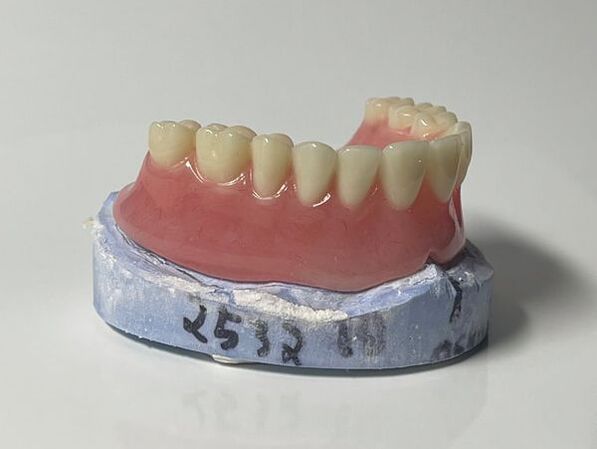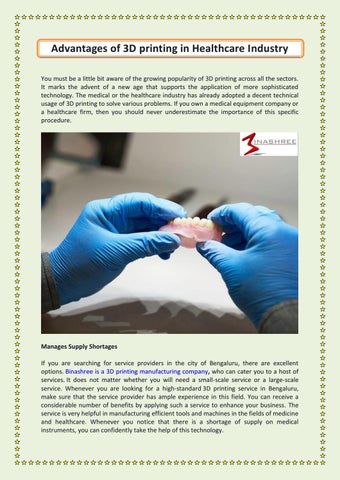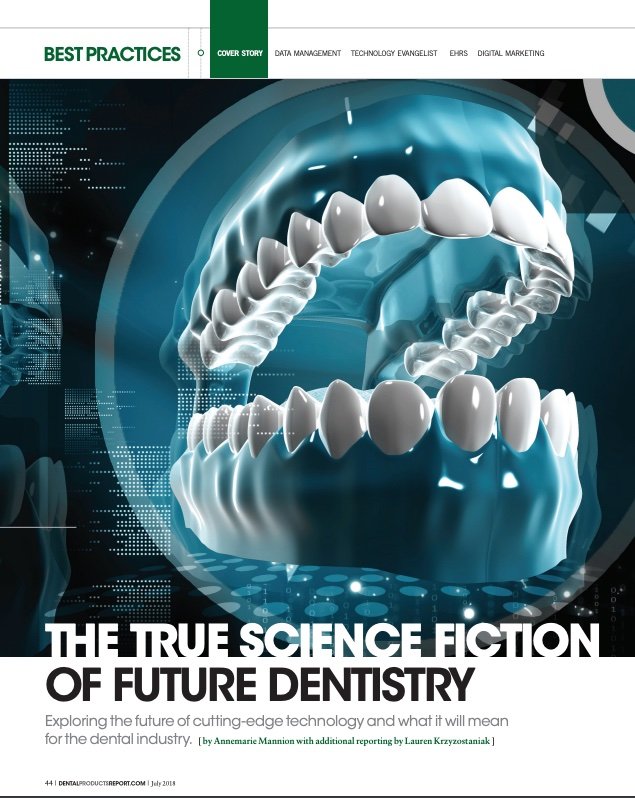Medical Ebook Review
DENTURES FOR A NEW ERA
In the era of digital transformation, the field of dentistry is experiencing a comprehensive reshaping in how products and services are delivered. Among these advancements, dentures have entered a new chapter marked by innovative technologies that continuously enhance both effectiveness and aesthetics. The transition from traditional methods to digital solutions not only introduces new products but also transforms the experiences of patients and professionals alike. As we delve into this new era of dentures, we will explore several key areas that illustrate the remarkable evolution and potential for future developments.

The world is evolving rapidly, driven by technological advancements. In the past, dentures relied heavily on complex manual processes, often resulting in long production times and inconsistent outcomes. However, with the advent of digital dentures, we are stepping into a new age. Technologies such as CAD/CAM and 3D printing have significantly reduced manufacturing time while improving accuracy in creating these essential oral appliances.

Traditional denture fabrication involved numerous steps, each requiring specialized skill and time. This often meant multiple visits for patients, extending the timeline for receiving their prosthetic teeth.
The introduction of digital technology streamlined this process dramatically. With digital scans, dental impressions can be captured quickly and accurately, replacing the need for uncomfortable and messy traditional molds.
Moreover, the use of CAD/CAM technology allows dentists to design dentures with precision. These systems enable the creation of a virtual model of the patient’s mouth, allowing for tailored designs that fit better and look more natural. The entire workflow from impression to finished product has become more efficient, enhancing both patient satisfaction and operational efficiency within practices.

3D printing technology has emerged as a game-changer in denture production. Its ability to create highly detailed and customized products opens up new possibilities for dentists and patients alike.
One significant advantage of 3D printing is the reduction in material waste. Unlike traditional methods that require carving out blocks of material, 3D printing uses additive manufacturing, which builds objects layer by layer. This process minimizes waste and contributes to more sustainable practices in dentistry.
Additionally, 3D-printed dentures can be produced in a fraction of the time compared to traditional techniques. Patients no longer have to wait weeks to receive their final product, as rapid prototyping allows for quicker turnaround times. This efficiency not only improves the patient experience but also supports dental practices in managing their workload effectively.
Enhancing Quality of Life Through Modern Dentures
Modern dentures serve a purpose far beyond merely restoring chewing function; they act as vital instruments for enhancing the quality of life for users.
Comfort and Natural Feel
One of the most significant concerns among denture wearers is comfort. Early dentures, often made from rigid materials, could cause discomfort and would require frequent adjustments.
Today’s modern materials, including flexible resins and advanced polymers, offer a more comfortable fit. These materials adapt better to the unique contours of each patient’s mouth, providing a snug fit that feels more natural.
Furthermore, the aesthetics of dentures have improved tremendously. With advancements in color matching and the ability to replicate the translucency of natural teeth, patients can enjoy a smile that looks genuine and appealing. Thus, the confidence boost from wearing aesthetically pleasing dentures enhances social interactions and overall self-esteem.
Functionality in Daily Life
Dentures are designed to restore functionality, particularly concerning eating and speaking. For many individuals who have lost their teeth, the inability to chew properly can lead to nutritional deficiencies and a reduced quality of life.
Modern dentures provide a solution, enabling users to enjoy a wider range of foods without fear of embarrassment or discomfort. The improved design allows for greater stability, minimizing slippage and ensuring that wearers can eat and speak confidently.
Moreover, the psychological aspect shouldn’t be underestimated. The ability to engage freely in social situations without worrying about one’s appearance can significantly improve mental well-being. Many patients report feeling liberated once they have transitioned to high-quality, well-designed dentures.

: Integrating Artificial Intelligence
While the immediate benefits of digital dentures are clear, the potential for future enhancements remains even more exciting. One prominent trend is the integration of artificial intelligence (AI) into the design and manufacturing processes.
Personalizing Dental Solutions
Imagine a future where AI analyzes individual facial structures and bone configurations to recommend personalized denture designs. This level of customization would revolutionize the industry, ensuring that each patient receives a solution tailored specifically to their unique anatomical requirements.
AI algorithms could process vast amounts of data, learning from previous cases to optimize design parameters continually. This capability could lead to improved patient outcomes, as dentists would have access to a wealth of knowledge that helps them make informed decisions.
Predictive Analytics for Patient Care
Beyond design, AI can also play a critical role in patient care. Predictive analytics can help dentists anticipate issues before they arise, leading to proactive solutions. By monitoring patient feedback and treatment results, AI can assist dental professionals in identifying patterns and trends that may indicate potential complications.
This shift towards preventive care could drastically reduce the number of patients facing denture-related problems, offering a new standard of excellence in dental health management.
Building Long-Term Relationships with Patients
With the immense potential offered by technology, the shift to digital dentures presents opportunities to create lasting relationships with clients.
Ongoing Maintenance and Support
As patients evolve in their understanding of their dental needs, so too must practitioners adapt. Offering ongoing maintenance and check-ups becomes crucial in establishing trust and reliability within a practice.
Regular follow-up appointments for cleaning and adjustments should be part of a comprehensive care plan. This approach ensures that patients view their dentures as more than just a one-time purchase; instead, they see them as an integral component of maintaining their health and well-being.
Fostering Community and Engagement
Practices can foster a sense of community by engaging patients through educational workshops and online platforms. Sharing information about the latest technologies and innovations in denture care can empower patients to take an active role in their oral health journey.
Additionally, creating support networks for denture wearers can enhance patient experiences. Online forums or community events where users share their stories and tips can promote camaraderie and provide reassurance.
Conclusion
The landscape of dentistry is indeed transforming rapidly, and dentures for a new era stand at the forefront of this revolution. From the rise of digital technologies to the integration of AI, the journey towards creating effective, comfortable, and aesthetically pleasing dentures continues to unfold. As we navigate this exciting terrain, it is essential to recognize the profound impact these advancements have on the lives of patients and the opportunities they present for dental professionals.
In this new era, the focus extends beyond mere product quality; it encompasses the holistic experience of care that patients expect and deserve. By embracing technological innovations and fostering long-term relationships, the dental community is poised to usher in a brighter future—one where every smile can shine brightly once more.

